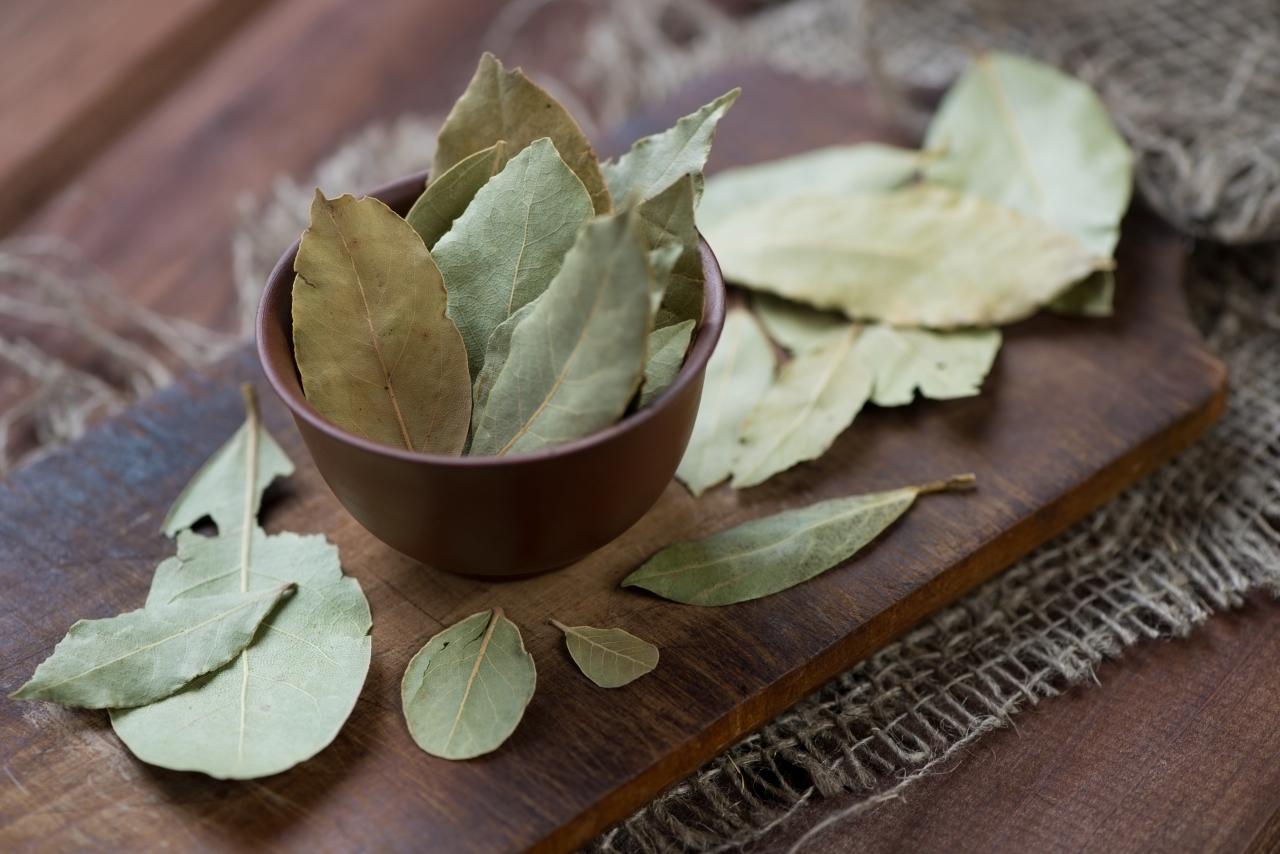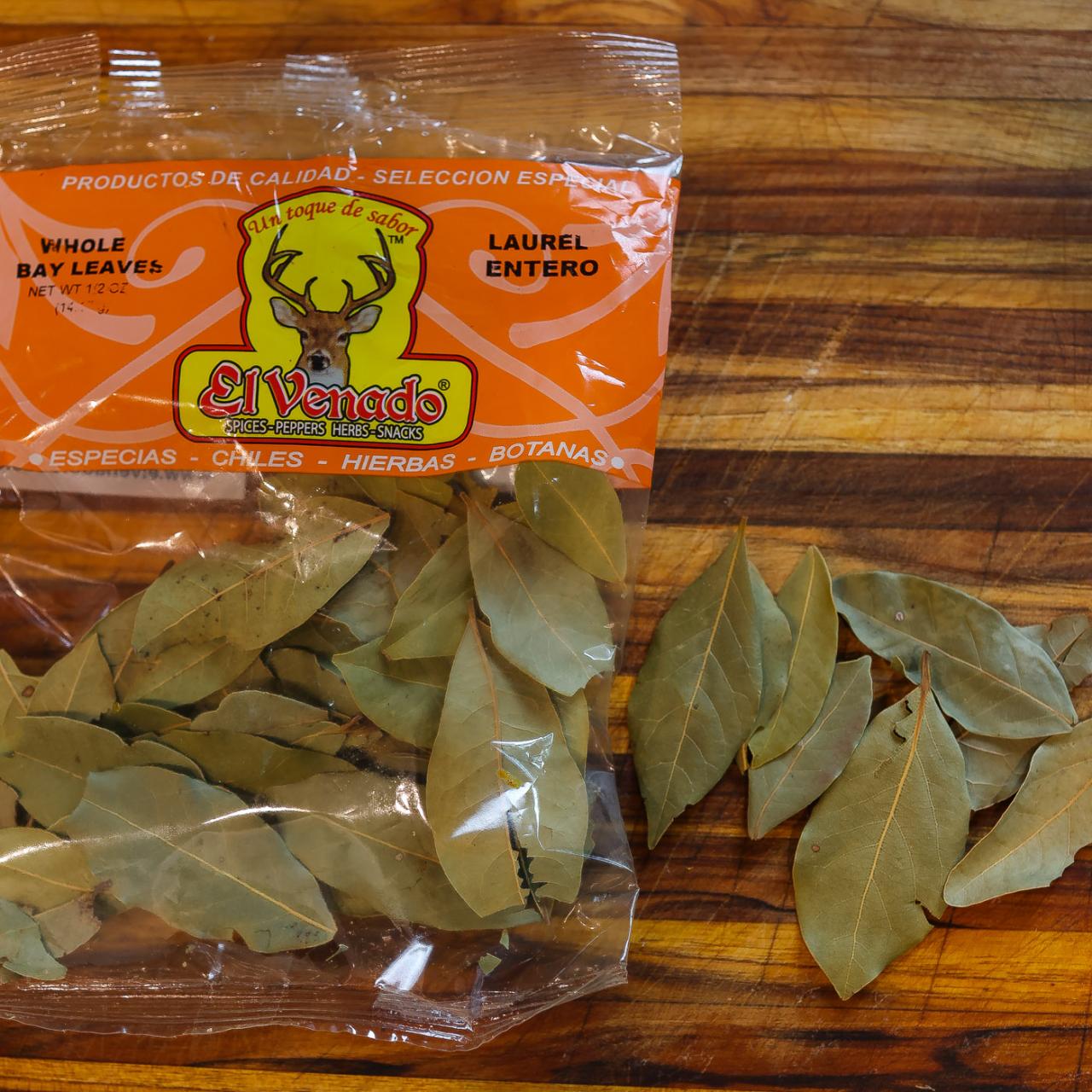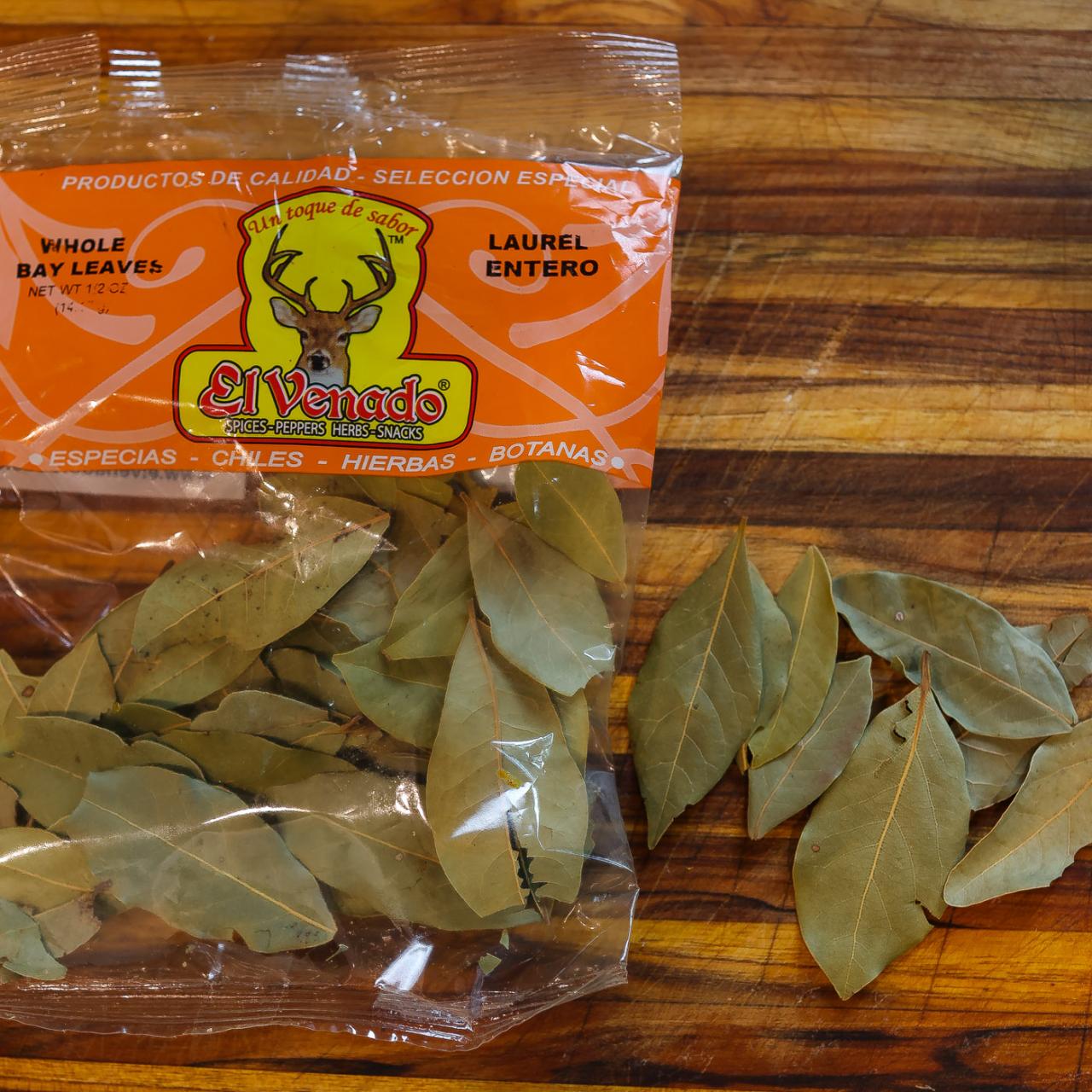The Top Substitutes for Bay Leaves to Use in Your Cooking: Bay leaves, with their earthy, slightly bitter aroma, have long been a staple in kitchens worldwide. From fragrant stews to rich sauces, their presence adds a subtle complexity that elevates countless dishes.
But what if you find yourself without this essential ingredient? Fear not, for a world of flavorful alternatives awaits, each offering its unique twist on the classic bay leaf experience.
This guide explores the top substitutes for bay leaves, delving into their flavor profiles, ideal uses, and potential limitations. Whether you’re seeking a direct replacement or looking to experiment with new flavor combinations, this comprehensive resource will equip you with the knowledge to confidently recreate your favorite dishes or discover exciting new culinary adventures.
Understanding Bay Leaves and Their Role in Cooking

Bay leaves, with their characteristic aroma and flavor, have been a staple in culinary traditions worldwide for centuries. These unassuming leaves, derived from the evergreen bay laurel tree, impart a unique depth and complexity to various dishes.
The Flavor Profile of Bay Leaves
Bay leaves possess a distinct flavor profile characterized by a combination of earthy, slightly bitter, and subtly sweet notes. They also contain a hint of camphor, adding a touch of warmth and complexity. The flavor intensity can vary depending on the type of bay leaf, with Mediterranean bay leaves generally considered more robust and aromatic.
Common Uses of Bay Leaves in Cuisines, The Top Substitutes for Bay Leaves to Use in Your Cooking
Bay leaves are widely used in diverse culinary traditions, adding a touch of sophistication and depth to various dishes.
In European Cuisine
Bay leaves are particularly prominent in Mediterranean cuisine, where they are used extensively in stews, soups, sauces, and braises. Examples include:
- French cuisine:Bouillabaisse, a classic Provençal fish stew, prominently features bay leaves alongside saffron, fennel, and other aromatic herbs.
- Italian cuisine:Osso buco, a slow-cooked veal shank dish, relies on bay leaves for a subtle, savory flavor.
- Spanish cuisine:Paella, a vibrant rice dish, often includes bay leaves for a touch of earthy complexity.
In Asian Cuisine
Bay leaves are also incorporated into various Asian cuisines, contributing to the unique flavor profiles of many dishes. Examples include:
- Chinese cuisine:Bay leaves are used in braised meats, stews, and stir-fries, adding a distinct aroma and depth of flavor.
- Vietnamese cuisine:Pho, a popular noodle soup, often includes bay leaves, along with star anise, cinnamon, and other spices.
In Other Cuisines
Bay leaves are also found in cuisines around the world, contributing to the characteristic flavors of various dishes. Examples include:
- Indian cuisine:Bay leaves are frequently used in curries, adding a touch of earthy complexity and warmth.
- Latin American cuisine:Bay leaves are often incorporated into stews, sauces, and rice dishes, enhancing their flavor profile.
Examples of Dishes Featuring Bay Leaves
Bay leaves are featured prominently in a wide range of dishes, adding a unique and often essential layer of flavor. Some notable examples include:
- Chicken Pot Pie:Bay leaves add a subtle, earthy aroma and depth of flavor to the classic chicken pot pie.
- Beef Stew:Bay leaves are a key ingredient in beef stew, contributing a rich, savory flavor that complements the meat and vegetables.
- Tomato Sauce:Bay leaves are often added to tomato sauce, enhancing its complexity and providing a hint of warmth.
Top Bay Leaf Substitutes
Bay leaves, with their distinctive aroma and subtle bitterness, play a crucial role in many cuisines. While they’re often considered indispensable, there are times when a substitute is needed, either due to unavailability or personal preference. This comprehensive guide explores the best bay leaf substitutes, providing insights into their flavor profiles, ideal applications, and considerations for successful culinary substitutions.
Top Bay Leaf Substitutes: A Comprehensive Guide
Bay leaves impart a complex flavor profile that is difficult to replicate precisely. However, several substitutes can offer similar aromatic and savory notes, enhancing dishes in unique ways.
Substitute |
Flavor Profile |
Best Uses |
Considerations |
|---|---|---|---|
Dried Thyme |
Earthy, slightly minty, with hints of citrus and a touch of bitterness. |
Stews, soups, braises, roasted vegetables, and marinades. |
Thyme’s flavor is less intense than bay leaves, so use a slightly larger amount to achieve a similar effect. |
Dried Rosemary |
Piney, camphoraceous, with hints of citrus and a slightly bitter edge. |
Roasted meats, poultry, lamb, and hearty stews. |
Rosemary has a stronger, more pronounced flavor than bay leaves. Use sparingly to avoid overpowering other ingredients. |
Dried Marjoram |
Slightly sweet, slightly bitter, with notes of oregano and thyme. |
Chicken, fish, soups, stews, and tomato-based sauces. |
Marjoram’s flavor is milder than bay leaves, so use a slightly larger amount for a similar effect. |
Dried Oregano |
Earthy, slightly bitter, with notes of mint and pepper. |
Tomato-based sauces, pizzas, pasta dishes, and meat marinades. |
Oregano’s flavor is more assertive than bay leaves, so use sparingly to avoid overpowering other ingredients. |
Substitutes for Specific Dishes

Bay leaves are a versatile ingredient that adds depth and complexity to a wide range of dishes. While they are a staple in many cuisines, there are times when you might not have them on hand or prefer to use a different flavor profile.
Understanding the nuances of different substitutes and their impact on specific dishes is crucial for achieving the desired taste.
Stews
Stews are a perfect example of a dish where bay leaves shine, adding a warm, earthy, and slightly bitter note that complements the rich flavors of the meat and vegetables. When substituting for bay leaves in stews, consider the desired intensity and character you want to achieve.
Using Whole Spices
- Thyme:Thyme offers a similar warm and slightly bitter flavor to bay leaves, making it a suitable substitute in stews. Its herbaceous notes blend well with the meat and vegetables, adding a fresh and aromatic dimension.
- Rosemary:Rosemary provides a more robust and pungent flavor compared to bay leaves. Its piney and slightly camphoraceous notes can enhance the richness of the stew, especially when paired with hearty meats like beef or lamb.
- Black Peppercorns:While not as aromatic as bay leaves, black peppercorns can add a spicy kick and depth to stews. Their pungent flavor complements the richness of the stew, creating a complex and satisfying taste.
Using Herbs
- Dried Marjoram:Marjoram offers a warm, slightly sweet, and earthy flavor profile that complements the rich flavors of stews. It is a good choice for lighter stews, as it provides a more delicate flavor than bay leaves.
- Dried Oregano:Oregano has a more robust and pungent flavor compared to marjoram, adding a distinct Mediterranean touch to stews. It is ideal for stews with tomatoes or other Mediterranean ingredients.
Tips for using substitutes in stews:
While exploring culinary alternatives, you might stumble upon the fascinating world of four-leaf clovers, a symbol of luck and a testament to the power of nature’s anomalies. If you’re looking to cultivate your own patch of good fortune, be sure to check out How to Ensure Success with Your Four Leaf Clover Cultivation , a comprehensive guide to growing these rare beauties.
Back in the kitchen, remember that while bay leaves add a distinct aroma, their substitutes, like thyme, rosemary, or even a pinch of oregano, can also elevate your dishes.
- Use a combination of substitutes to create a complex flavor profile.
- Start with a small amount of the substitute and adjust to taste.
- Add the substitute towards the end of cooking to preserve its flavor.
Experimenting with Flavor Combinations
Bay leaves are known for their subtle, earthy, and slightly bitter flavor. However, the beauty of using substitutes lies in the opportunity to explore new flavor profiles and create unique culinary experiences. By combining different substitutes, you can achieve a symphony of flavors that complements your dishes in unexpected ways.
Exploring Synergistic Flavor Combinations
When experimenting with substitutes, it’s important to consider the flavors they bring to the table and how they interact with each other. For example, combining the citrusy zest of lemon peel with the warm, slightly sweet notes of cinnamon can create a vibrant and aromatic blend that complements savory dishes.
Similarly, the peppery heat of black peppercorns paired with the earthy depth of dried thyme can add complexity and depth to stews and soups.
- Citrusy and Aromatic:Combine lemon peel with cinnamon, star anise, or cloves for a bright and fragrant flavor profile. This combination works well in dishes like chicken, fish, or roasted vegetables.
- Spicy and Earthy:Combine black peppercorns with dried thyme, rosemary, or oregano for a savory and complex flavor. This blend is perfect for stews, soups, and braises.
- Floral and Refreshing:Combine lavender with rosemary, sage, or thyme for a subtle floral note with a hint of earthiness. This combination works well in desserts, sauces, and marinades.
Recipes with Multiple Substitutes
- Mediterranean Lemon Herb Chicken:Use a combination of lemon peel, oregano, and thyme to create a bright and aromatic marinade for chicken. The citrusy notes of lemon peel complement the earthy flavors of oregano and thyme, creating a balanced and flavorful dish.
- Spiced Pumpkin Soup:Combine cinnamon, nutmeg, and ginger to create a warm and comforting soup. The combination of these spices enhances the natural sweetness of pumpkin, creating a rich and flavorful soup.
- Lavender Honey Glazed Salmon:Combine lavender, rosemary, and thyme to create a fragrant glaze for salmon. The floral notes of lavender complement the earthy flavors of rosemary and thyme, creating a delicate and aromatic glaze.
Adjusting Quantities for Desired Flavor Intensity
When experimenting with substitutes, it’s essential to adjust the quantities based on your personal preference and the desired intensity of flavor. For example, if you prefer a subtle flavor, you can use a smaller amount of each substitute. Conversely, if you want a more pronounced flavor, you can use a larger amount.
Remember, the beauty of cooking lies in experimentation. Don’t be afraid to try different combinations and discover new flavor profiles that excite your taste buds.
While bay leaves are a staple in many kitchens, exploring alternatives can add depth and complexity to your dishes. If you’re looking for a plant that not only adds culinary flair but also beautifies your garden, consider the Rodgers plant, Why the Rodgers Plant Should Be Your Next Garden Addition.
Its leaves, with their distinct aroma and flavor, can be used as a substitute for bay leaves in various recipes. Whether you’re seeking a fragrant herb or a stunning addition to your landscape, the Rodgers plant is a versatile choice.
Sourcing and Storing Bay Leaf Substitutes
Finding high-quality substitutes and storing them properly are essential for maintaining their freshness and flavor. This ensures you can enjoy the full benefits of using these alternatives in your cooking.
Finding Reputable Sources
To ensure you’re getting the best quality bay leaf substitutes, it’s important to source them from reputable suppliers. Here are some suggestions:
- Specialty Spice Shops:These shops often carry a wider selection of high-quality herbs and spices, including bay leaf substitutes. They are also knowledgeable about the origins and quality of their products, providing valuable advice.
- Online Retailers:Reputable online retailers offer a convenient way to purchase bay leaf substitutes. Look for retailers with positive reviews and a focus on high-quality ingredients.
- Local Farmers’ Markets:Visiting farmers’ markets can provide access to fresh, locally grown herbs and spices, including bay leaf substitutes. You can often talk directly to the producers, learning about their growing practices and ensuring the freshness of their products.
Proper Storage for Maximum Freshness
Storing bay leaf substitutes correctly is crucial for preserving their flavor and aroma. Here are some storage tips:
- Airtight Containers:Store dried bay leaf substitutes, such as rosemary, thyme, and sage, in airtight containers to prevent moisture and air from affecting their quality. This helps maintain their flavor and aroma for a longer period.
- Cool, Dark Place:Store your containers in a cool, dark place, away from direct sunlight and heat. These conditions help prevent the degradation of the herbs’ essential oils, preserving their flavor and aroma.
- Refrigeration for Fresh Herbs:If you’re using fresh herbs as substitutes, such as parsley or basil, store them in the refrigerator in airtight containers or wrapped in damp paper towels. This helps keep them fresh and flavorful for up to a week.
Shelf Life and Best Practices
The shelf life of bay leaf substitutes varies depending on the type and storage method. Here’s a general guideline:
- Dried Herbs:Dried herbs, like rosemary, thyme, and sage, typically have a shelf life of up to 12 months when stored properly. However, their flavor and aroma can diminish over time. It’s best to use them within 6-12 months for optimal flavor.
- Fresh Herbs:Fresh herbs, like parsley and basil, have a much shorter shelf life, lasting only a few days to a week when stored properly. Their flavor and aroma deteriorate rapidly after harvest. Using fresh herbs within a few days of purchase is ideal.
Importance of Fresh Substitutes
Using fresh bay leaf substitutes whenever possible is recommended for optimal flavor and aroma. Fresh herbs contain higher concentrations of volatile compounds that contribute to their characteristic flavor and fragrance. While dried herbs can be a convenient option, fresh herbs offer a more vibrant and nuanced flavor profile.
Final Conclusion
The world of bay leaf substitutes offers a fascinating journey of flavor exploration. By understanding the nuances of each alternative, you can elevate your cooking to new heights. Whether you’re recreating a classic recipe or venturing into uncharted culinary territory, these substitutes provide a versatile toolkit for culinary creativity.
So, embrace the possibilities, experiment with different combinations, and unlock the full potential of your culinary imagination.
Frequently Asked Questions: The Top Substitutes For Bay Leaves To Use In Your Cooking
Can I use dried bay leaves instead of fresh?
Yes, dried bay leaves are a suitable substitute for fresh bay leaves. However, they are more concentrated in flavor, so use them sparingly. Start with half the amount of dried bay leaves compared to fresh.
Are there any substitutes for bay leaves that are vegetarian or vegan?
Yes, all of the substitutes listed in this guide are vegetarian and vegan-friendly. Bay leaves themselves are a plant-based ingredient, and the substitutes are derived from various herbs, spices, and botanicals.
